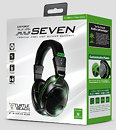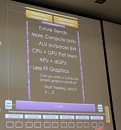
Mad Catz Reports Fiscal 2015 First Quarter Financial Results
Mad Catz Interactive, Inc. (NYSE MKT/TSX: MCZ), today announced financial results for the fiscal 2015 first quarter ended June 30, 2014. Fiscal 2015 first quarter net sales declined 10% to $16.7 million, driven by a 17% decline in net sales in both EMEA and the Americas, offset partially by a 49% increase in net sales in APAC. Gross margin for the fiscal 2015 first quarter improved to 30.2%, compared to 28.7% in the prior year quarter. Total operating expenses in the fiscal 2015 first quarter decreased 17% from the prior year period to $6.2 million.
Diluted loss per share was ($0.02) for the fiscal 2015 first quarter, compared to a diluted loss per share of ($0.03) in the prior year quarter. Net position of bank loan, less cash, of $5.3 million at June 30, 2014, compared to $4.1 million at March 31, 2014 and $8.4 million at June 30, 2013. Highlights also include shipping of the new range of Tritton Xbox One licensed headsets, the S.T.R.I.K.E.M Mobile Keyboard for iOS, Android and Windows; the Saitek X-55 RHINO H.O.T.A.S. System for Windows PC; the R.A.T.TE (Tournament Edition) Gaming Mouse for Windows PC and Mac, and the Mad Catz C.T.R.L.R Wireless Gamepad for Amazon Fire TV, PC, Mac, and Android Smart Devices. The company announced participation in Needham Interconnect Conference on August 6, 2014.
Diluted loss per share was ($0.02) for the fiscal 2015 first quarter, compared to a diluted loss per share of ($0.03) in the prior year quarter. Net position of bank loan, less cash, of $5.3 million at June 30, 2014, compared to $4.1 million at March 31, 2014 and $8.4 million at June 30, 2013. Highlights also include shipping of the new range of Tritton Xbox One licensed headsets, the S.T.R.I.K.E.M Mobile Keyboard for iOS, Android and Windows; the Saitek X-55 RHINO H.O.T.A.S. System for Windows PC; the R.A.T.TE (Tournament Edition) Gaming Mouse for Windows PC and Mac, and the Mad Catz C.T.R.L.R Wireless Gamepad for Amazon Fire TV, PC, Mac, and Android Smart Devices. The company announced participation in Needham Interconnect Conference on August 6, 2014.























